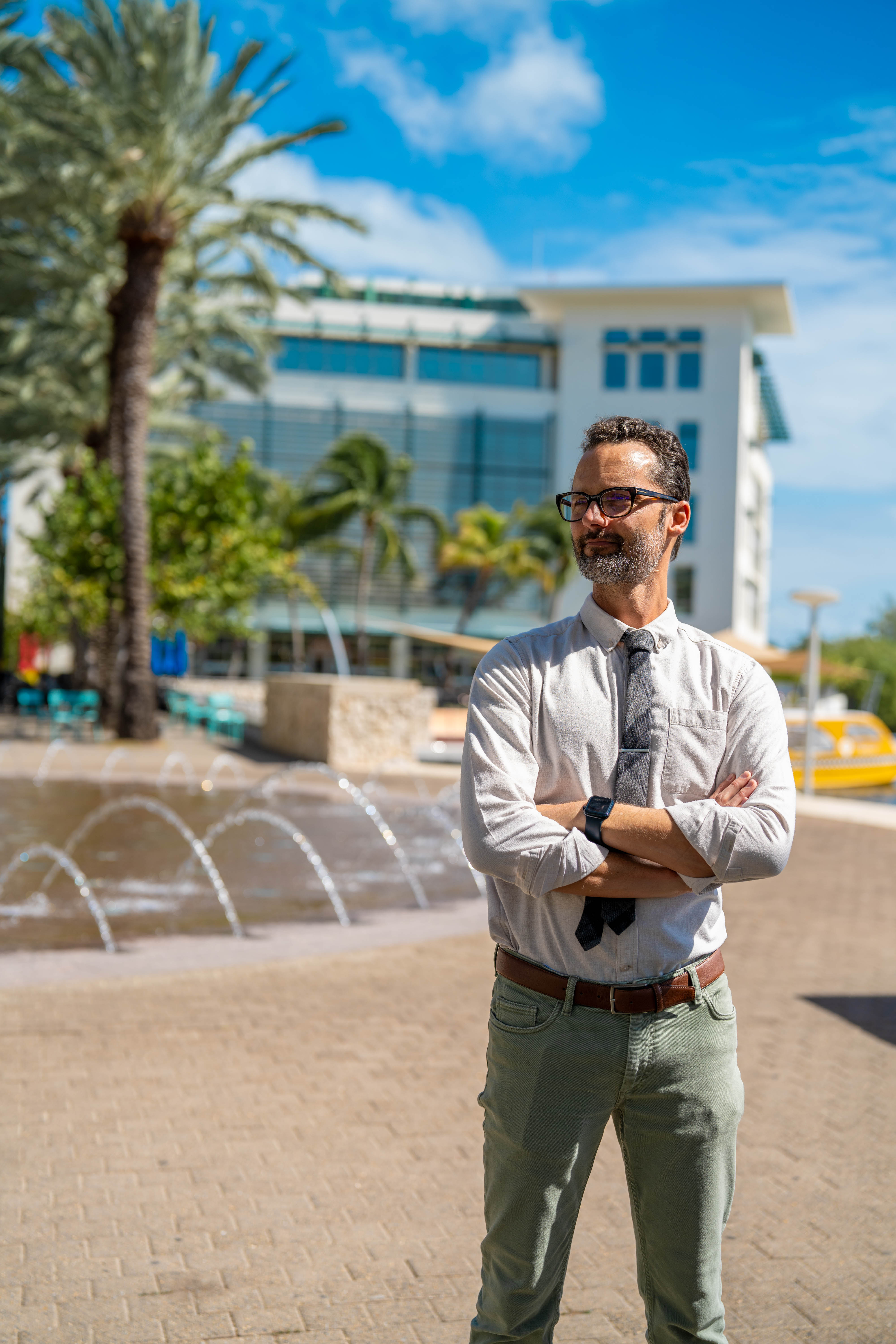

Dart Design Manager Ross Tibbetts says some of Camana Bay’s most sustainable features are based on historical practices, such as collecting rainwater. — Photo: Rhian Campbell
The United Nations observes World Water Day on 22 March each year to promote access to fresh water as a basic human right. This year’s theme was Water for Peace, highlighting how quickly scarcity or pollution of the water supply leads to tension and conflict.
In Cayman, we are fortunate to have a reliable source of water that is clean enough to drink straight from the tap. But have you ever stopped to think where our water comes from? And what can we do to help preserve nature’s most precious resource?
Historically in Grand Cayman, water either came from one of three freshwater lenses located just below ground level, or rainwater was collected and stored in cisterns. For the past 50 years, almost all of Cayman's water is now made by reverse osmosis, a process that desalinates and filters groundwater from wells drilled deep beneath the island. Just 3% of homes in Cayman still rely on cisterns for water.
However, as reverse osmosis is an energy-intensive process, there is still value in harvesting rainwater to reduce water consumption and lower carbon emissions. Cistern water may not be safe to drink, but it is ideal for irrigation, especially as many plants prefer natural rainwater to city water.
Camana Bay captures rainwater in three vast cisterns; one is located under the cinema and the others under One Nexus Way and 18 Forum Lane, which are both certified as LEED® Gold office buildings. With a combined capacity of 290,000 gallons, the water is put to good use irrigating landscaped areas and is also used to flush toilets in these two buildings. In the event of a disaster like a hurricane, the cisterns can be switched to feed water to all fixtures.
Fixtures are low flow to improve water efficiency, and Camana Bay uses drip irrigation rather than sprinklers to deliver water right to the roots and avoid losing water through evaporation.
“Some of Camana Bay’s most sustainable features are based on historical practices, such as collecting rainwater, orientating buildings to catch the prevailing breezes and landscaping with native plants with low water needs,” says Ross Tibbetts, design manager at Dart. “Even before we started building the Town Centre, we put in pipes underground to be able to reuse rainwater for irrigation.”
Dart laid pipes for rainwater and the chiller plant underneath what would become the Esterly Tibbetts Highway more than 20 years ago.
Grey water refers to wastewater that comes from plumbing systems other than toilets. Dart laid pipes for grey water and the chiller plant underneath what would become the Esterley Tibbetts Highway more than 20 years ago.
Cayman residents who are lucky enough to live in a house built with a cistern will be well aware of the benefits of using rainwater for watering their gardens, washing their cars or filling their pools. A more cost-effective alternative for harvesting rainwater is a water butt underneath a drainpipe that collects and stores rain from the gutters.
For those of us reliant on city water, we can give thanks to the engineers of the 1980s who made sure we have access to clean water at the turn of a tap.
This article was published in the April 2024 print edition of Camana bay Times.